
Traditional Scottish Music

|
|
Traditional Scottish Music |
|
|
Updated: January 10, 2008
IntroductionMy familiarity with Scottish traditional music is much less than with Irish music, so I display my lack of knowledge so others can educate me! In many ways Scottish music is similar to Irish music. Scottish groups often include Irish musicians. Singers such as Andy M. Stewart or Connie Dover switch back and forth between Irish and Scottish songs naturally. Groups such as Boys of the Loch and even Capercaille have generally contained a mixture of Scottish and Irish musicians. To my untrained ear, there are a few obvious differences. Scottish music often includes the well-known highland pipes, an instrument also found in Ireland, but mainly in the north. The Scots also have smaller pipes, the Scottish small pipes and the border pipes. These are bellow-driven pipes, like the Irish uillean pipes, but lacking the latter's regulators. When there are accordions in a Scottish group, these tend to be piano accordions, in contrast to the button accordions more commonly found in Irish music. In Scottish music, piano and cello accompaniment are more common than in Irish music. The Scots also have unique dances not found in Irish music. The most common one is the strathspey. Polkas, found frequently in Irish music, tend to be rare. I divide Scottish music into four main types (I'm sure others have different splits): |
Scottish music tends to appears on different music labels than Irish music. The main labels are: Greentrax Recordings, KRL/Lochshore, Culburnie Records and Attic Records (Shetland/Orkney). |
Collections:There are quite a few collections of "Scottish music", but most seem to be pipe bands. Recently, some different, and excellent collections have come out. They are the cheapest way to get exposure to a wide variety of musicians and groups: |
|
 |
The Music and Song of Greentrax - The Best of Scottish Music (Greentrax, 1996 CDTRAX 8696). This two CD set covers a remarkably wide range of traditional musicians and groups playing traditional music with a more modern sound. Included on the 36 tracks on this set are, among others: Ceolberg, guitar great Tony McManus, Eric Bogle, Shooglenifty, piper Hamish Moore, Seelyhoo, Deaf Shepherd, Brian McNeill, Catherine-Ann MacPhee, Jean Redpath, Whistlebinkies, Sangsters, Stravaig, and the Scottish Gas Caledonian Pipe Band. (Highly recommended) |
 |
Flowers of Edinburgh (Tartan Tapes 1999) This collection of
Scotland's finest young musicians was recorded live at the Shoots & Roots
Festival in Edinburgh in April 1998. Among those featured are Clare McLaughlin
(fiddle), Marianne Campbell (fiddle), Jim Malcolm (singer for Old Blind Dogs),
Iain Macinnes (small pipes), Talita Mackenzie (vocal), John Morran (vocal),
Simon Bradley (fiddle) and Iain Macleod (mandolin), Eilidh Shaw (fiddle),
Russell Hunter (fiddle), Mae Shaw (vocal), Leo McCann (button accordion),
Elspeth Cowie (vocal) Simon Thoumire (concertina) and Jim Sutherland (bodhran
& djembe). The playing is stellar, the live audience feeding energy to the
players. There is great singing, fiery fiddling, foot stomping, harps, and
swirling bagpipes. Ain't nothing missing here. A very fine review of the great
young Scottish players here in concert. (Highly recommended) |
 |
Heart of Scotland - a collection of traditional and modern gaelic songs (The Music Club, 1998). This is good collection of contemporary Scottish music. This is another collection of best pieces from the Greentrax catalog. The title is a bit misleading since there are only two Gaelic songs on this 67 minute CD, and most of the tracks are instrumentals. There are tracks again from Deaf Shepherd, Seelyhoo, Ceolberg, Janet Russell and Christine Kydd, piper Hamish Moore, guitarist Tony McManus, piper Ian Hardie, and singer Catherine-Ann Macphee. However, I believe there is no overlap in the tunes selected with the earlier Greentrax CD, so its no hard to justify getting both! This CD also includes the celtic rock of Peatbog Faeries, and a great set of live tunes from Boys of the Lough. |
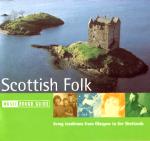 |
The Rough Guide to Scottish Music (World Music Network) This CD companion to the excellent tour guide is quite a good sample of Scottish music. 19 tracks by the same number of artists ranging from traditional Gaelic singing of Christie Primrose, instrumentals by the Battlefield Band, Capercaille, and Tannahill Weavers; the harp playing of Alison Kinnaird; the fiddling of Alasdair Fraser, Johnny Hardie & Gavin Marwick; to the Scots singing of Silly Wizard. Highlights for me was some rousing piping by John D. Burgess and a very unceltic "Dirty Old Town" by Ewan Maccoll. The CD features acts more on the commercial end of the spectrum and has no coverage at all of musicians from Orkney or the Shetlands! It does have good liner notes. (Recommended) |
 |
The Best of Scottish Folk (Plus/Kaz Recoords 1996). This is another nice album, notwithstanding the packaging aimed at the tourist market. The songs on this album tend to come from the Lowlands and Borders, and there are no Gaelic songs on the album. Among the musicians featured are: Archie Fisher, Ian Campbell, Isla Cameron, and Alex Campbell (Recommended) |
 |
World Library of Folk and Primitive Music - Vol. III, Scotland (Rounder Records, CD 1743, 1998). This collection of 40 unaccompanied songs and 3 tunes, generally short, was recorded, largely in the field in 1951. by Alan Lomax for the BBC. Half the songs are from the Lowlands and Borders, and the other half are from the Highlands, mainly the Outer Hebridies. Rounder has included 40 pages of excellent liner notes giving the context and background of these songs. The songs from the Lowlands are all in Scots, whereas the songs from the Highlands are all in Gaelic. These are recordings of regular people making traditional music for themselves and their friends as they go about milking the cow, churning the butter, or waulking the tweed. There are even several songs of children in the schoolyard skipping rope. These songs are neither polished nor tuned to the modern ear.I would not recommend them as a first purchase of Scotttish music. But you have a serious interest in the music, in particular in Gaelic singing, they are a rare treasure and insight into the roots of this music. |
Groups: |
|
|
|
Silly Wizard -- Live Wizardry (Green Linnet, 1988) This is my single favorite Celtic record. It is unbelievably good. Andy M. Stewart, Phil and Johnny Cunningham--ballads, reels, humor -- this album has it all. Andy M. Stewart has the finest male voice in Celtic music. His singing of ballads such as "Golden, Golden", "The Banks of the Lee" or "The Broom of the Cowden Knowses" makes the hair stand up on my neck. Stewart can also sing fast, humerous Scots songs such as "The Parish of Dunkeld" with zest, humor, and great effect. Meanwhile the instrumental numbers led by Phil's piano accordion and brother Phil's fiddle are lightening fast, but with passion and control. There is enough "lift" on these numbers to levitate the crowd. This album was recorded live at a concert in Cambridge Massachusetts shortly before the band broke up. The energy level of the crowd was very high, and it must have been an incredible evening. Most of Silly Wizard's albums are good, but this is the best. |
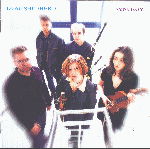 |
Deaf Shepherd - Synergy (Greentrax 1997) This
exciting young Scottish band has two highland pipers (Rory Campbell and Malcolm
Stitt), two fiddlers (Marianne Curran and Clare McLaughlin ) and several
singers/guitarists. The music is generally traditional with the songs in Scots.
There is some beautiful harmony singing on this album, but it is in the
instrumentals that the band really shines. Lots of energy and lift and the
pipes sound great in this group, not overpowering anyone. The more I
listen to this album, the more I love it. If Dervish or Solas were Scottish
rather than Irish, this is what they might sound like. Highly
recommended. |
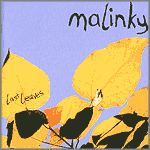 |
Malinky - Last
Leaves (Greentrax 2000) This fine young group is making a
splash, having won the Danny Award for new talent at the 1999 Celtic
Connections Festival in Edinburgh. This, their debut CD, is an excellent and
varied collection of instrumentals plus traditional and new ballads in Scots
(often about witches). Particularly striking is Karine Polwart's terrific
singing. You may
have heard Karine a couple of years ago with
the Battlefield Band or on their excellent Happy Daze CD.) Karine is joined by Steve Byrne
who plays bouzouki, guitar, cittern and mandolin and sings; Kit Patterson on
fiddle, guitar and mandolin, and Mark Dunlop. Karine also contributes two of
her own songs, and her singing on her song "The Dreadful End of Marianna for
Sorcery" is electrifying; it is one of those moments that captures the full
beauty and force of traditional Scottish music. Hear this once and you too will
be a Karine Polwart fan. The boys do more than hold their own with fine playing
on the tunes and songs keeping energy hopping along. I also should mention
Steve Byrne's lovely singing on a couple of tunes. A great new discovery!
(Very highly recommended) |
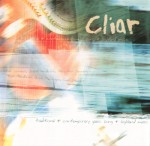 |
Cliar - Cliar (Macmeanmna 2000). Cliar has been
described as a Gaelic "supergroup", and after hearing them in Cape Breton in
2001, the label is well deserved. This CD of mainly songs (all in Gaelic) and
some very lively instrumentals is a wonder of diversity, and breathes an
enormous amount of life and joy into very traditional tunes. The glory of the
group is the quality of the 5 singers, including the glorious Arthur Cormack.
Ingrid Henderson and Mary Ann Kennedy both sing wonderfully and play clarsach
when occasion calls. Bruce MacGregor's fiddling is terrific in accompaniment or
as the lead. Chaz Stewart on guitars and Maggie Macdonald fill out the group.
The beauty of the songs, the harmonies, the quality of the mouth music, and the
arrangements is just stunning. Great liner notes with complete lyrics in Gaelic
and English. Check Cliar out; I think you'll love them. (Very highly
recommended) |
|
|
|
 |
Tabache -- Waves of Rush (KRL Lochshore 1999) This, the second album by this young Scottish traditional duo of Aidan O'Rourke on fiddle, Claire Mann on fiddle, flute, whistles and vocals. Aidan is one of Scotland's best fiddlers having played with Deaf Shepherd and Capercaille. Claire is an all-Ireland winner on whistle and a finalist on fiddle. In an embarassment of talent, Claire also sings with a lovely, warm voice. Both are excellent tune writers. They are accompanied by Malcolm Stitt on guitar and various other friends. The level of excitement that Aidan and Claire can generate with their playing is amazing. When the two are both fiddling, the only comparison I can think of is the Irish supergroup Altan. As they have been touring the U.S. this month, a tidal waive of praise has been flowing out over the Internet from each city they visit. At the house concert I saw them at, I think everyone in the audience bought at one, if not both, of their CDs. This is a very exciting group. Very highly recommended. |
|
|
Capercaille -
Delirium
(Green Linnet 1991). My favorite album from this prolific group.
Sidewaulk is also great.
The musical leader of this group is Karen Matheson, whose startlingly beautiful
voice singing in Gaelic is one of the wonders of Celtic music. Their material
is getting less and less traditional, so if you favor more traditional songs,
buy one of their earlier albums. Their newer albums such as Beautiful Wasteland
(1997) incorporate more and more non-Scottish elements including African
singing, and though well done, doesn't scratch my traditional itch. Their most
recent album nàdurra is somewhat more
traditional, but still not as good as their first albums. |
|
|
The Cast -- The
Winnowing (Culburnie
Records, 1996). The duet of Mairi Campbell and Dave Francis bring a special
sensitivity and love of tradition to their work. This collection of songs is
just superb. Their version of "Auld Lang Syne" -- a song we all tend to hate --
on this album was a revelation to me. They have recently released a second
album,The Colours of
Lichen (1997) which is also excellent. |
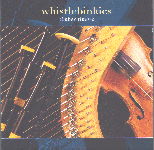  |
The Whistlebinkies -- timber timbre (Greentrax 1999). Over the last 20 years, this Scottish traditonal group has earned much respect. Rab Wallace on Lowland and Scottish smallpipes, Judith Peacock on clàrsach (Scottish harp) and vocals, Peter Anderson on bodhrán and Scottish side-drum, Stuart Eydmann, on fiddle, concertina and vocals, Mark Hayward on fiddle, and Eddie McGuire on flue, piccolo and clàrsach. Excellent piping and Gaelic singing. 6 of the 7 tunes and the 4 songs (3 in Gaelic including one waulking song, 1 in Scots) are (or sound) traditional. This album is growing on me. I like it better every time I hear it, which is a good sign. The Whistlebinkies are a large group -- (three fiddles, one or two clàrsachs (harps), one singer, one piper, drums, and flute, piccolo and concertina as needed. 6 of the 7 tunes and the 4 songs (3 in Gaelic including one waulking song, 1 in Scots) are (or sound) traditional. It was the piping of Rab Wallace on Scottish smallpipes on a gorgeous version of "Sandy's New Chanter" that first caught my attention, then the lovely use of the clàrsachs, and the varied and intelligent arrangements all the way around. They are joined by James McMillan for one song. This music is more gentle than Deaf Shepherd's brilliant CD, but lovely in its own way. If you like this CD, you may also want to get a wanton fling (Greentrax Recording 1996) |
 |
Seelyhoo - First Caul (GreentraxRecordings 1995) a six member young Scottish band that includes the wonderful young Orcadian stars Jennifer and Hazel Wrigley as well as Sandy Brechin, an excellent piano accordion player. This group combines excellent traditional playing and some Gaelic singing with a gentle spirit of adventure like an early Capercaille. The Glasgow Herald described this album as "a well-paced and highly recommended selection...an admirably tight team ...good bright tunes with an attractive lilt and often, a light jazzy swing." |
 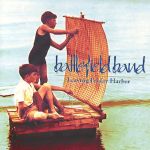  |
Battlefield Band -- rain, hail or shine (Temple Records 1998) I've tended to like some of the Battlefield Band's music, particularly the more traditional material, and to dislike their more rock and pop material. This album sounds traditional, though the lads have written many of the songs themselves, and I like it more than most of theirs. -Leaving Friday Harbor (1999, Temple Records). So varied is their music, I don't know what to expect from a new Battlefield Band album, but it is usually good news. This time they have given us a lovely, gentle, lyrical album of 5 songs and 6 sets of tunes. The whole album has a lovely, polished craft to it. It is the piping of Mike Katz on the small and highland pipes that keeps running through my memory after the CD stops spinning. (Highly recommended) - Happy Daze (Temple Records 2001 distributed by Rounder Records). I fire up this CD in my player, and there is Alan Reid's familiar voice and Mike Katz's always strong piping, but Hark! What's this woman's voice? An angelic voice in this all-male group? Yes, indeed - one Karine Polwart, and what a super addition this is to the band! She gives the band a wonderful, richer sound. A lot of songs on this CD (6), and Karine enriches them all both on lead and some great duets. Less theatrical than Rain, Hail or Shine, this CD makes for easier repeated listening, and much repeated listening it has been getting at my place. Happy days are here again indeed! (Very highly recommended) |
 |
The Boys of the Lough -- The Day DawnThis is one of my favorite groups. The membership of the band has changed over the many years they have been playing, but it has usually included a mix of Scottish and Irish musicians. Their new album, The West of Ireland, is reviewed on the new CDs page. |
 |
Jock
Tamson's Bairns--A' Jock Tamson's Bairns (Greentrax 1996). This
is a re-release of two albums from one of the seminal Scottish traditional
bands in the late 70s and early 80s - most of the 1980 album A' Jock
Tamson's Bairns and all of their 1982 album The Lasses Fashion. With
wonderful singing and instrumentals, this 2 CD set grows on you, and thats a
good thing. (Highly recommended) After a 20 recording hiatus, they came
back in 2000 with a new CD, May You Never Lack
a Scone (Greentrax) with its
very thick Scots accents and playing that is as comfortable as an old tweed
jacket. |
 |
The Poozies -- Infinite Blue (1998) The newest album from this infectiously attractive Scottish/English group. More serious, traditional, and Scottish than their previous albums, this is a fine and interesting piece of work. I am particularly impressed by two songs sung by Kate Rusby: "Neptune" by Jim Malcolm, a contemporary love song about the sea, and "The Maid of Llanwellyn", as well as Patsy Seddon's singing on the traditional "Ma Plaid." Great singing, fine instrumentals from the fun and talented foursome. Well done, Poozies! (Highly recommended) The Poozies other albums (w/o Kate Rusby) are also excellent, and I particularly recommend Dansoozies () |
 |
The Tannahill Weavers -- Epona (Green Linnet 1998) This traditional group has 14 albums out now. The five members play guitar, bouzouki, flute, fiddle, bagpipes (Highland and Scottish small pipes), and bodhran. Three of the members alternate leading the vocals. The songs are largely in Scots (with a Scots-English dictionary included). The group is good and has many fans, though I am not as fond of them as the other groups mentioned. See also the review of Alchemy. |
 |
Old Blind Dogs -- The World's Room (1999 Green Linnet). Old Blind Dogs have been one of the favorite Scottish groups at festivals for years. The current lineup features the very talented Jonny Hardie fiddle, Rory Campell on border pipes and whistle, Jim Malcolm on guitar, harmonica and lead vcals, and Buzzby McMillan on cittern. Many of their songs are in Scots. Personally, I am put of by the heavy percussion sound of this band which now features Paul Jennings on djembe and conga drums. However, this group has legions of fans in Scotland and the Bay Area. |
 |
Jonny Hardie and Gavin Marwich with Davy Cattanach
-- Up in the Air (KRL
Lochshore 1994). This is another fine instrumental album with Marwick on
fiddle, Hardie on fiddle, guitar and bouzouki, and Cattanagh on percussion and
guitar. They play traditional tunes in their own very interesting arrangements
with a very slight jazzy feel to it. The music and playing is steeped in the
tradition, the resulting music is highly addictive. They released a new CD in 1999, The Blue Lamp that I don't like as much, but most of the critics do. |
Songs & Singers:Scottish music has a rich heritage of song. Puirt-a-beul, or "mouth music", are songs in Gaelic written to dance to, are a particularly unique feature of this music. These were often sung for dancers when there were no instruments available, and the lyrics were always secondary to the rythm of the dance. You can hear these songs on the albums of singers from the Highlands and particularly the Hebrides such as Karen Matheson on the early Capercaille CDs, and Mairi MacInnis. There is also a wonderful ballad tradition, which is where my taste tends to lie and which is a bit more accessible. |
|
|
|
Connie Dover --If Ever I Return (Taylor Park Music, 1997). This extraordinary American singer has the most beautiful voice in Celtic music, singing a mixture of Scottish, Irish, and American songs with breath-taking skill. This is a legend in the making and all four of her albums are "must-haves". This American singer/cowgirl from Kansas City has adopted Scotland as her musical home, and with the help of Phil Cunningham, Aly Bain, Manus Lunny and other notables, this 3rd album of Irish and Scottish songs, is very, very nice. Her version of the traditional Irish song "How Can I Live at the Top of the Mountain?" with gorgeous highland piping by Iain MacDonald, is the best song of 1997. Connie's other CDs are also excellent. Of particular note is her terrific CD The Border of Heaven which explores the Scottish and English roots of American cowboy songs. |
|
|
Andy M. Stewart -- Songs of Robert Burns (Green Linnet) as sung by one of the great voices in Celtic music. Stewart was the singer in the legendary band Silly Wizard, and now has a solo career. His other solo albums, consisting mainly of folk ballads in English or Scots, many written by himself, are also beautifully crafted. In particular, I highly recommend Donegal Rain (Green Linnet, 1998). As one wag (correctly) put it, Stewart has such a great voice and technique that he could sing "Happy Birthday" and make it a deeply meaningful experience. Also a great live performer. |
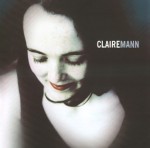 |
Claire Mann -
Claire Mann (Foot Stompin Records 2001) Claire has an
embarassment of talent. An All-Ireland flute champion, a wicked Scottish
fiddler, and a fine singer, all at her early age. She has shined on the two
albums as part of the wonderful Scottish trio Tabache with John McCusker. Here,
on her first "solo" CD, she lets is all fly, and a lovely, lively CD of Irish
and Scottish tunes and songs it is. She is ably assisted by Aaron Jones on
bouzouki and guitar, John Joe Kelly on bodhran, Brian McAlpine on keyboards,
and Simon Thoumire on concertina, but the focus remains on Claire who often
plays both flute and fiddle on the same tune. Claire's singing has matured and
her self-confidence grown into a voice I'm quite fond of. Lovely stuff here.
(Highly recommended) |
 |
Mackenzie -- Camhanach(1997, Macmeanmna/Portland America ) Mackenzie consists of three young sisters - Fiona, Gillian & Eilidh --from Gress on the Isle of Lewis, Scotland. This album is a collection of Gaelic songs. All three sisters are excellent singrs; Eilidh and Gillain have won national honors in Scotland. Together, they have wonderful harmonies. They are backed by some very tasteful accompaniment provided by some of Scotland's finest instrumentalists. Highly recommended |
| Dick Gaughan -- Legendary songwriter and singer widely credited with renewing interest in Scottish music. | |
| Dougie MacLean -- Dougie is famous, but mainly among followers of folk music. A terrific songwriter and a very engaging solo live performer. Personally, I love Dougie's songs, but generally more when performed by others . | |
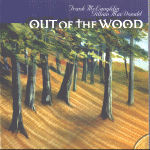 |
Frank McLaughlin and Gillian MacDonald -- Out of the Wood (Claytara Records 1998). Gillian sings with a lovely and expressive voice and plays whistles, Frank plays the Scottish small pipes, wrote several of the tunes, and does some background vocals; both play guitar, and an assortment of friends add fiddle, accordion, cello and bass on various tracks. This album is a mix of nice instrumentals andy beautiful songs in English and Scots . This unpretentious album is lovely work all around, and I'm having a hard time getting it out of my CD player. |
Fiddlers: |
(Be sure to check out also the outstanding fiddlers from Orkney and Shetland. |
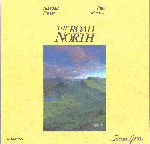
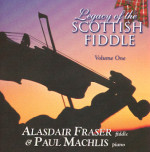 |
Alasdair Fraser -- The Road North (re-released on Narada records) and Skye Dance (Culburnie Records) (the album, not the group). Fraser is a Scottish fiddler now living in California. The Road North combines traditional tunes with a strong beat in a way that consistently gives me goosebumps. This is extremely approachable Celtic music. I recommend these albums very highly. Recently, Alasdair has been recording in a bigger group which he has come to call Skyedance (not to be confused with the pre-group album!). The group's music wanders further from traditional arrangements over toward world music land. Their newest album, Way Out to Hope Street, as , is too much like world music for my tastes. See also the wonderful duet album Alasdair has done with Scottish
guitarist Tony MacManus - Return to Kintail (Culburnie
Records, 1999) . Together they are awesome. This is a very traditional album
with just fiddle/viola and guitar. Alasdair's playing is as lovely as ever, and
Tony's a revelation. The best album for both of them. Also of note is
Alasdair's new CD (2001) Legacy of the Scottish Fiddle, volume
1 with pianist Paul Machlis which is also excellent. |
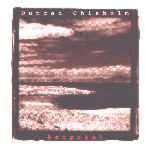 |
Duncan Chisholm -
Redpoint (Copperfish Records,
Inverness Scotland 1998?). The single best album I got in Scotland. Duncan
Chisholm is an exceptional fiddler, better known for his work with the Celtic
rock group Wolfstone. However, this album is all acoustic with a much more
traditional feel. He is very ably assisted by guitarist Ivan Drever, and Phil
Cunningham on several tracks. Most of the tracks are quiet and contemplative
airs, though Chisholm rips through a couple of great reels as well, including a
great version of Michael Grey's "Asleep at the Wheel" and the traditional "In
and Out of the Harbour". This album sounds very traditional, notwithstanding
the lush synthesizer (?) wash in the background, and the fact that 11 of the 14
tunes are recent compositions. There is a soulfulness and exquisite sensitivity
in the playing and arrangements that reflect a deep love and commitment to
traditional music. Very Highly Recommended. |
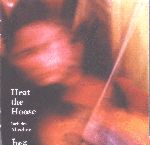 |
Various - Heat the Hoose (Tartan Tapes, 1998). This CD was recorded at "Fiddle'97 Edinburgh" during what seem an inpromptu set of recitals and sessions. There is often crowd noise in the background, and the music is not studio-polished. With that caveat, there is some great music on this all-instrumental CD. It starts with a great set of tunes from Alasdair Fraser accompanied by Tony McManus. There are also terrific tunes from Clare Mann & Aiden O'Rourke (of Tabache), and Clare McLaughlin (of Deaf Shepherd) plus Connaillaigh, Paul Anderson, Alasdair White, a great set from Karen Steven, Eilidh Shaw, Amy Geddes, and a rousing finale by Chris Stout. Great Scottish fiddling all around. |
| Heat The
Hoose 2 (Foot
Stompin' Records 2000) The state of Scottish fiddling is improving as
indicated in this 60 minute CD of 16 young fiddlers playing either solo or with
minimal accompaniment on guitar (Kris Drever), flute, and piano. Featured are
the best of the young fiddlers at Fiddle 2000 in Edinburgh. The fiddlers I was
familiar with include Aidan O'Rourke (Tabache, Blazin Fiddles), Liz Doherty,
Claire Mann (Tabache), John McCusker (Battlefield Band), Eilidh Shaw (The
Poozies), Simon Bradley (Llan de Cubel), Jennifer & Hazel Wrigley, Clare
McLaughlin, and Marianne Campbell (both from Deaf Shepherd, cMc). Artists I had
not heard of include Sarah McFadyen, Kenny Fraser, Maeve and Orna Gilchrist,
Anna-Wendy Stevenson, Derek and Sarah Hoy,and Russell Hunter. All the tracks
were recorded in a studio rather than in the hallways as was the case with
Heat the Hoose. This is a stunning array of talent and the music is a
fine cross-section of Scottish fiddling. (Highly recommended) |
|
 |
Various - The Wee Hours -- the Future of Scottish Fiddling in North America (1998, Gargoyle Recordings). This is an exceptionally fine album highlighting the playing of 8 great young fiddlers and one pianist (Cali McKasson). All the musicians were students or instructors at Alasdair Fraser's Valley of the Moon Scottish Fiddling School. Featured on this album are Hanneke Cassel, Rebecca Richman and Robin Smith both from Santa Rosa, Carley Williams, Janel Vanderwarf, Ryan McKasson, Thaddeus Sze, Laura Cortese of San Francisco. This is a great album of largely traditional Scottish music played with enormous skill. This is a wonderful album by any standard. Alasdair Fraser comments: "Free-spirited, expressive, youthfully exuberant, unfetteed joy." Martin Hayes says: "Amazing virtuosity, intuitive, understanding, music insight." They're right. |
 |
Brian McNeil - To Answer the Peacock -Music for the Scottish Fiddle
(Greentrax 1999). McNeill has so many
talents. His last concert in Berkely had him singing songs he wrote,
accompanying himself on guitar. But this album is almost entirely fiddle tunes,
most written by McNeill himself. And lovely they are. 13 tunes, on most of
which McNeill accompanies himself on guitar, mandolin, viola, mandocello,
bouzouki or keyboards, and one long (17 minutes) autobiographical story about
busking. The tunes sound traditional, the arrangements intelligent letting the
fiddle sing out, and the playing is masterful. |
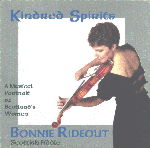 |
Bonnie Rideout -- Kindred Spirits, A Musical Portrait of Scotland's Women. (Maggie's Music ) This young Scottish-American is a three time U.S. National Scottish Fiddle Champion. This album not only shows her skill but also displays a wonderful variety and sensitivity. Particularly interesting is her composition, "Kindred Spirits", an 11 1/2 minute piobaireachd for fiddle, a tune style usually associated with the pipes. For a radically different take on Scottish fiddling, listen to some of the Cape Bretoners. Bonnie's playing seems timid indeed in comparison. Indeed, one Cape Breton fan compared Bonnie to the Lawrence Welk of Scottish fiddling! Unkind, she's no Loreena McKennitt, but it does point out the much calmer, classical style of her playing which contrasts with the more energetic, rythmic and edgy Cape Breton sound. |
| Johnny Cunningham, cofounder of Silly Wizard, has gone on to have a career as a solo performer. Johnny likes to (1) have fun, and (2) play tunes faster than humanly possible. In addition to his work with Silly Wizard, he has one album, Fair Warning readily available on the Green Linnet label, and appears as part of the "Celtic Fiddle Festival" group which have two CDs out on Green Linnet. |
Pipers:My introduction to bagpipes was via the highland or war pipes, marching in huge militaristic formations. This sent me running in the other direction. The appearance of single pipers in highly amplified bands also seemed an attack on my eardrums. However, as solo instruments in an acoustic setting (an occurrence I gather is seen more in Cape Breton than Scotland), Scottish bagpipes can be quite intoxicating. And my discovery of the Scottish small pipes, similiar in many ways to the Irish uillean pipes, whetted my interest further. A concert of Scottish pipers at the Gaelic College in Cape Breton in 1997 showed a sensitivity and sophistication to this music that I had not imagined. My picks below tend to favor the solo instrument. Check also the Cape Breton page. |
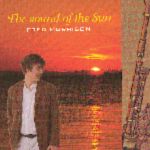 |
Fred Morrison --
The Sound of the Sun (1999
KRL Lochshore CDLCL 1284) Fred was the
piper with the band Capercaille for years, but recently has launched a solo
career which is even more interesting. This, his second, is an album of rare
beauty and absolutely stunning piping. It was made after Fred's epiphany
listening to the piping of Cape Breton, and he listened well. (Fred's debut
solo album, Broken Chanter (Lismor Recordings, 1993) predates this
period.) Cape Breton tunes and style of playing permeates all the playing. The
joy and energy of this music is lacking in so much piping in Scotland; this CD
will be a great blast of fresh air over there. A great highland piper, Fred
chooses to play most of the tunes on the smaller, sweeter-sounding, and more
intimate border pipes (which sound great with him playing them), with one set
even on the uilleann pipes. Fred also plays the low whistle on four tunes to
great effect. (Essential Purchase!) |
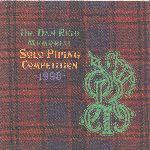 |
Dr. Dan Reid Memorial Solo Piping Competition - 1998 -- These are live recordings made during the competition itself at the St. Francis Hotel in San Francisco. The performances selected are those of the winners in the March, Strathspey,and Reel competition and on the Piobraireachd competitions as well as the piobaireachd from the (junior) Cameron/Gillies Champioship. 'This is as good as traditional solo piping gets.Pipers included are P/M Roddy MacLeod, Bruce Gandy, P/M William J.R. Livingstone, William McCallum, and Stewart Liddell. |
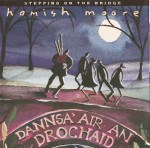 |
Hamish Moore - Dannsa' Air An Drochaid - Stepping on the Bridge (Greentrax 1994). Moore is from Scotland, but intimately familiar with Cape Breton music, and one of the key figures in introducing Cape Breton music back to Scotland. This CD is an homage to the piping of Cape Breton legend Alex Currie. Recorded at the Gaelic College in Cape Breton with local musicians fiddler Jerry Holland, pianist Hilda Chaisson, and guitarist Paul Macdonald. Moore is also a renowned pipemaker and founder of the Ceolas school of music in South Uist in the Hebrides. The CD also has excellent liner notes. |
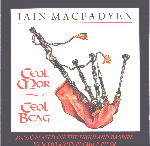 |
Iain MacFadyen --
Ceol Mor, Ceol Beag (Temple Records 1985, reissued 1996) .
This is one of my favorite piping albums. It starts off with "Ceol Mor"-- a
couple of piobaireachds, the long, formal, contemplative pieces considered the
highest form of piping. Then it switches to Ceol Beag -- the dance music which
is more familiar to most. All of it is played brilliantly. Highly
recommended. |
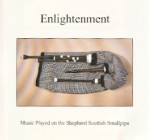 |
P/M David Barnes - Enlightenment (R.T. Shepherd & Son Recordings 1997). This is a lovely collection of 13 sets of traditional tunes, many written by Barnes, including marches, slow airs, jigs, a strathspey, reels, hymns and a piobaireachd all played on the Scottish Highland Smallpipe in the key of Upper D. |
 |
Robert Matheson -- The Big Birl.
(Lismor LCOM 5262) Robert Matheson is the pipe major of a championship piping
band. This album is all over the board in terms to music played from slow airs
to Calypso. Matheson plays both highland pipes and Scottish small pipes. The
man is clearly very good, but the range of music played may be a bit extreme to
many. |
 |
The Simon Fraser University Pipe Band -- Live at Carnegie Hall (Lismor 1998) This band won the World Championships in 1995 and 1996. Find out why. This is a superb album with an a terrific mix of pipe band tunes, superb solo piping from the likes of Andrew Bonar, Jack Lee, Stuart Liddell. This is a great CD to buy if you doubt you will like pipe bands (or if you already do). |
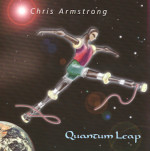 |
Chris Armstrong - Quantum Leap (KRL Lochshore 2000). Armstrong is the
wunderkind of Scottish piping right now. The reviewer at The Living
Tradition magazine describes the playing on this CD as "technically
perfect...there's absolutely nothing to criticise on this album. Every home
should have one." The highlight for me was a breathtaking set of slow marches.
There is something to please everybody here from from straight traditional
playing to "ceilidh funk". And remarkably, Armstrong wrote nearly all the tunes
on the CD! (Very highly recommended) |
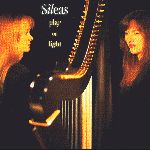 |
Sìleas - Play on Light (Greentrax, 1996). Sìleas consists of Mary Macmaster and Patsy Seddon. You may be more familiar with them as half of the popular group, The Poozies. They both play harps, Patsy a gut strung harp and Mary a harp strung with brass, phosphor bronze and steel harpsichord wire. They also both sing, mainly in Gaelic, but also in English. The tunes and songs are mainly traditional, with one pop tune, and several traditional sounding tunes written by themselves. |
 |
Tony McManus -- Tony is an unbelievably brilliant guitar player either solo on his two albums or playing with Alasdair Fraser on their new album- Return to Kintail (Culburnie Records, 1999) McManus' work on the guitar is a revelation of what this instrument is capable of in celtic music; it is absolutely stunning, both when he is playing solo or carrying the melody and in accompaniment. Alasdair and Tony are a musical match made in heaven. This is the finest album of each of these great players. Very highly recommended. |
To Additional Reviews of Scottish CDsWhere to Get Scottish CDs:
Local Scottish Cultural Groups |
|
Scottish DancingMy ignorance is really going to show here! My understanding is that Scottish dancing can be split into three main types - (1) the archtypal young men and women leaping in very acrobatic steps generally seen in competition at Highland Games, (2) the Scottish Country Dancing which is social and much closer to the folk dancing found in Europe, and (3) the old fashioned step dancing (both social and solo), which became extinct in Scotland, but continued to thrive in Cape Breton and is being enthusiastically reintroduced to Scotland.
Scottish Music Resources on the Internet
|
![]()
| Celtic Music Home Page |
Irish Music |
|
Scottish Music | Cape Breton Music |
Scarff's homepage |
Please send me your comments or suggestions: jim@sfcelticmusic.com